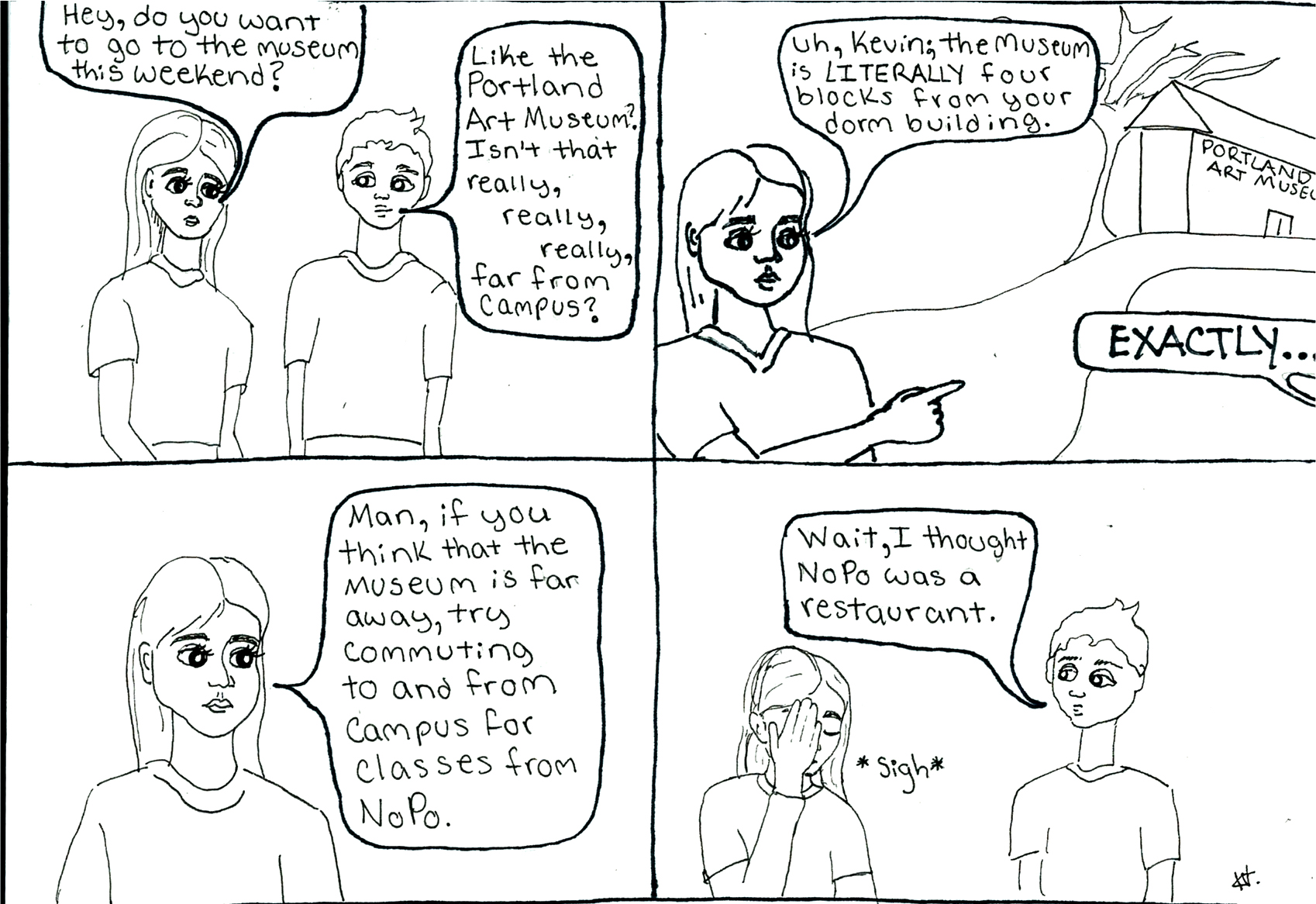Spend some cash in Lincoln Hall this week, and you’ll see muscular dancers pushing and throwing each other in a seemingly endless web of violence, recovery and restraint. The performers grit their teeth in tension as they struggle through the barriers of their own and each others’ bodies. In the process, they lash out at the open space with power and strength, sweating through their street clothes and trying to relive every forgotten embarrassment, rage and thrill.
That far away place
Spend some cash in Lincoln Hall this week, and you’ll see muscular dancers pushing and throwing each other in a seemingly endless web of violence, recovery and restraint.
The performers grit their teeth in tension as they struggle through the barriers of their own and each others’ bodies. In the process, they lash out at the open space with power and strength, sweating through their street clothes and trying to relive every forgotten embarrassment, rage and thrill.
ALASKA, by the Buenos Aires-based choreographer Diana Szeinblum, is a carefully-crafted piece of improvisational theater. Instead of forming a company and working with the same group of dancers to compose her work, Szeinblum’s style involves assembling new dancers for each piece and generating improvisational techniques until the exercises evolve into a performance.
Szeinblum’s work is related to the German expressionist style of Susanne Linke and Pina Bausch, performers of German Tanztheater or “dance theater,” who she trained under as a dancer with the Folkwang Tanz Schule company in Essen, a former industrial center in Germany. While ALASKA has no narrative, the dancers form bits of dialogue with each other’s bodies, by attacking, mimicking, or controlling the movements of the other bodies on stage.
The improvisational technique is laid bare in the dancers’ escalating movements. As one dancer begins a movement, others may follow and improve on it. Acts of self-scourging and determined balancing acts are repeated to the point of a new expression, allowing the performers to move seamlessly from one point to a completely different one, creating the schizophrenic motion of memories that truly taunt a body, over and over.
The minimalist set of ALASKA involves the skin and plain clothes of the dancers more than any particular wall color or lighting scheme. The costumes in particular create an explicit sense of touch. In vague earth tones that wrinkle loosely around the dancers’ bodies, the fabrics of street-wear–like chinos and T-shirts–appear saturated with sweat and frustration, expressing their inadequacy by covering the exacting expressions of the dancers’ muscular physiques.
Ulises Conti’s haunting and lovely music is performed live on the stage, and the dancers lounge on the floor during different parts of the performance, insisting on the impression that the show is merely a workspace for some ideas that have been sitting for too long.
Self described as a futuristic sound artist and a fan of Low and the Dirty Three, Conti’s composition is rich in violin and based on piano motifs. Quietly aching, the music was designed to work with the improvisational nature of the work and the bare set, acting as starting point from which to understand the emotive qualities of the dancers’ abstract movements.
But some of the best parts of the performance are completely silent, save for the echoing bits of skin slapping and slamming down on the floor.
ALASKA will be performed on Tuesday, Jan. 29 and Wednesday, Jan. 30 at 8 p.m. in Lincoln Hall. Tickets are $25 or $20 for PICA members.



